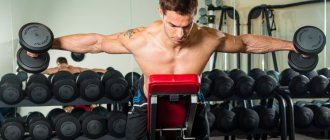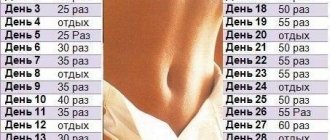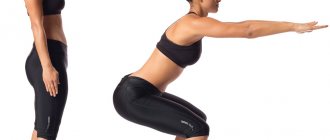The popularity of sports is growing rapidly, the demand for the services of fitness centers is only growing, a toned body has become an indispensable attribute, photos from the gym regularly appear on Instagram feeds. But working out on strength training equipment or with heavy weights is scary or prohibited by health conditions, and it’s scary to pay money for a subscription and a personal trainer for the first time. Functional fitness with its approach to training and exercise has become a convenient option.
Functional training does not require personal training (classes in a group or even on your own at home), there is no connection to exercise equipment, there are no heavy weights, and effective weight loss due to an active rhythm. Functional training in this format is a suitable budget option in the absence or minimal physical training.
Benefits and Benefits of Exercise
Functional training is a set of exercises that are as close as possible in the nature of movements to our daily activities - reaching up for a heavy vase and not losing it, walking along a curb without stepping into a puddle, standing on a wobbly chair and hanging curtains.
Exercises in such training involve various muscle groups, including deep ones, and develop the main physical characteristics of a person - strength, flexibility, concentration, balance. A high training pace has a positive weight loss effect when calories are actively burned. For an example of such functional training, see the video below.
In addition to the visual effect of being slim and fit, functional training affects the body, helping to improve well-being and condition:
- posture correction;
- ease when performing multi-joint and previously unusual actions;
- improving the functioning of the cardiovascular system;
- relief of headaches;
- improving the functioning of the lungs and respiratory system;
- developing a sense of balance.
Another pleasant bonus of such training is that they can be carried out without being tied to a location. Strength machines are not used in exercises; at the initial stage, even sports equipment is not required, so you can exercise both in the gym, at home or on the street.
The workouts are intense to burn calories, so the duration of the classes does not exceed an hour. During this time, the main muscle groups, as well as deep or rarely involved ones, for example, stabilizer muscles, have time to be used.
Benefits of classes
Functional training involves performing complex exercises in which more and more new muscle groups are gradually involved - and it is very important not only to alternate types of loads, but also to take into account their sequence. Courses in Moscow are very popular because they can:
- develop endurance;
- improve body coordination;
- increase agility;
- shape a beautiful body.
As a result of training, not only strength and reaction develop well, but also the functioning of the respiratory system improves, the heart muscle and the general condition of the body are strengthened. Classes should only be conducted under the guidance of an experienced trainer.
Contraindications
Despite the advantages and benefits, like any physical activity, functional training has contraindications:
- diseases of the cardiovascular or respiratory system;
- blood pressure problems;
- pregnancy;
- serious diseases of the spine;
- prolapse of the kidneys (with caution in jumping exercises).
In case of any of these health complications, it is recommended to first consult with your doctor. Sport should be useful, so the load is selected wisely and without harm to health.
If during training there is a deterioration in your health, pain (not related to muscle pain during exercise), or inflammatory processes, stop exercising and consult a doctor.
Basic exercises and equipment
The training system is based on the physiological movements of the body.
Her goal:
- increase in general tone;
- weight loss;
- development of flexibility;
- improving ligament elasticity and coordination;
- strengthening the muscle corset;
- stimulation of lymphatic drainage;
- improvement of strength and endurance indicators.
These achievements are healthier and more important for daily tasks than having huge muscles. The classes do not require complex exercise equipment; the program is adapted to be performed at home or in park areas.
Types of functional training
Functional training has become so popular that independent directions have begun to emerge from it. Let's consider the most famous of them, as well as new ones.
Base
Classic bodyweight training - in the gym, on the street, at home. Does not require simulators or special equipment.
Suitable for beginners, for people with serious health limitations, for athletes during the rehabilitation period after injury. This training format is preparatory to other types.
Training with apparatus
The workout is very similar to basic training, but sports equipment is added to the exercises. There are many options - weights, balls, step pads, fitballs, barbells, dumbbells, leg weights.
This format of classes is suitable for those who have mastered the basic level, understand the technique of execution, and physical training allows them to perform movements with weights. Each exercise affects the body individually - squats with a bar develop the gluteal and thigh muscles, lifting the legs while lying down with weights on the ankles enhances the impact on the abs, stepping and jumping on the step and back starts the process of losing weight, lifting the body on a fitball develops a sense of balance. Training with equipment is more varied than basic training, but it is more difficult and without physical training it is not recommended to start exercises with weights.
BOSU training
BOSU is a special training apparatus, which is a springy hemisphere (like a fitball), but with a rigid base. Training with BOSU equipment is varied due to the use of both working surfaces - you can train while standing on the soft surface of a hemisphere, or you can balance on a hard platform when the hemisphere is the base.
Such training develops a sense of balance and equilibrium, concentration, because it will not be possible to perform the exercise “somehow” while standing on a wobbly hemisphere. BOSU training is suitable for athletes with physical training for targeted development of stabilizer muscles, and is also useful for people with problems with the vestibular system.
TRX training
TRX training is a format of exercises that are performed with free weight (your own) on special slings with loops. Legs or arms are fixed in these loops, which significantly diversifies the movements performed, changes the trajectory, shifts the focus to other muscles, and is also performed partially on weight.
This training develops flexibility, plasticity, stretching, balance and concentration. It is difficult to do TRX at home (design and secure the slings yourself); it is more convenient to use a specialized gym with the necessary equipment.
Workout
Street Workout – training outdoors with your own weight, as well as on uneven bars, horizontal bars, walls, and stairs. Fresh air helps saturate the body with oxygen.
In addition, you can train outside without using specialized equipment (but if you wish, you can take weights for your legs or an elastic band, for example).
CrossFit
CrossFit is a type of functional training that has become an independent sport with its own coaches, competitions, and winners. Although there is a lot of controversy surrounding CrossFit, the basic principle of training is quite simple - do as much as possible in as little time as possible.
Essentially, this is circuit training without breaks. Beginners to CrossFit will need a specially equipped gym with the necessary equipment - walls, tires, ropes, weights, etc. Training develops explosive strength, speed, and determination.
Types of functional training
There are many different types of functional training, each of which corresponds to a particular area of sports. Eg:
- Exercise using weights;
- Interval training;
- Classes on horizontal bars;
- Group training with fitballs, step pads, microweights;
- Power yoga;
- Weight training;
- CrossFit;
- Training in TRX loops.
But conditionally, they are all divided into 2 types - training for weight loss and training for gaining muscle mass.
For weight loss. Functional training is perfect for this purpose, as it takes place at a fast pace. In addition to the calories burned during training, your metabolism also accelerates. Choose workouts that last at least an hour, do them at least 3 times a week, watch your diet, and you will notice the results very soon.
For muscle gain. In general, functional training does not imply a significant increase in muscle mass. This is only possible for those who have not trained with weights at all. If a bodybuilder switches to such training, he will inevitably “deflate”. If this story is not about you, then feel free to add more weight training exercises to your programs, increase your protein intake and reduce the number of repetitions to 12-15 times.
Bodymaster.ru recommends Training Plans:
It is not recommended for beginners without physical training to exercise in this format, because the load on the body due to the lack of breaks between exercises is great, as is the risk of injury. It is not recommended to engage in CrossFit if you have serious diseases of the cardiovascular system, respiratory system, or problems with the spine.
At the same time, this type of training is quite universal and is suitable, for example, for girls for weight loss workouts at home.
Kangoo Jumps
A new direction of training, based on performing exercises in special Kangoo Jumps boots on a spring platform about 20 cm high. This training has already gained popularity even among stars and world celebrities due to its positive mood (accompanied by upbeat music), unusual equipment in the form of boots for jumping.
It is very difficult to stand in such shoes; a good sense of balance is required. Training in these jumping boots burns much more calories than in sneakers. In addition, scientists have proven less trauma to joints and ligaments due to the shock-absorbing effect.
Circuit training
The training got its name because the exercises are performed “in a circle” - that is, similar to CrossFit, they are performed without breaks, but are not limited in time.
This training is effective for weight loss and is suitable for beginners.
Interval training
The principle of interval training is to perform exercises of a diverse nature (both strength and aerobic) over a certain period of time at a high pace. This pace is only suitable for athletes with good physical fitness, without problems with the cardiovascular and respiratory systems, since the load on these organs is high due to the lack of breaks and the high speed of exercise.
This type of functional training for weight loss is perfect, even if it is not possible to endure the entire workout - a couple of intervals will do their job and start the process of burning fat deposits.
Cardio loads
This is an essential part of the training program, aimed at strengthening the cardiovascular system and increasing endurance.
- Walking _ Gradually increase the intensity, including interval training, during which you move at your maximum pace for a minute and walk at your normal speed for two minutes.
- Jumping rope. Gradually speed up the pace. Make the exercise more difficult by jumping on one leg.
- Nordic walking. Works all the muscles.
- Monotonous jogging. Indispensable for endurance and fat burning.
- Cycling or exercise on an exercise bike. Many muscle groups are involved.
- Seasonal activities. Swim in the summer and ski in the winter.
Lack of time is just an excuse. Involve your family in sports, combine fitness and communication with loved ones.
Rules for compiling and conducting functional training
Before you run to the mat to start your workout, let's get acquainted with the basic principles of any workout.
Principles of the training process
Let's look at a few key features:
Monitoring your well-being and heart rate
Although it is necessary to maintain a high heart rate during exercise, the pulse should not exceed certain values. The optimal heart rate value is determined by the formula (220 – age) * 0.7. The resulting value characterizes the start of the fat burning process, but without deteriorating overall health. If pain, dizziness, or nausea occur, training should be stopped immediately. This reaction of the body indicates excess load, both in terms of weight and intensity.
Follow the execution technique
Correct execution guarantees maximum effect and absence of injuries, which is extremely important when exercising with weights.
Regularity
To achieve the effect of losing weight, you need to train at least 2-3 times a week, but be sure to give the body time to rest and recover, otherwise at some point overwork will occur.
Rules for compiling workouts
It is quite easy to create your own complex. The main thing is to take into account the following steps:
Warm-up
It is necessary to warm up the muscles before training, otherwise there is a high risk of injury. Light jogging in place, bending over, a little stretching. A few minutes will invigorate, tone the body, stretch the muscles for future loads, and have a beneficial effect on the effectiveness of the workout.
Gradual increase in load
It is recommended to start exercises with your own weight, even if it seems that with a barbell it will be easy too. The load should be increased gradually as the body copes with the current weight and more can be done. If it is still difficult to work with the increased weight, you should abandon it and return to the previous level - the body will not appreciate the heroic impulse.
Diversity
Exercises must be alternated depending on the type - aerobic with anaerobic, static with active, for balance - this way the body will receive a varied load, using different muscle groups. In addition, alternating yourself eliminates getting used to performing monotonous actions.
Hitch
Doing exercises similar to warming up for a couple of minutes will help relieve muscle pain not only now, but also the next day.
Weight loss training
You can use a set of functional exercises for weight loss. Any workout requires energy. With the same weight but different muscle mass, two people will have different metabolisms.
Muscles, even when at rest, require more energy than body fat. By playing sports, you force your body to burn excess fat. A balanced diet with a calorie deficit of 10-15% of the body’s basic expenditure will help speed up fat burning.
To lose weight:
- determine your current weight and height;
- Calculate your body mass index by dividing your weight in kilograms by the square of your height in cm.
Before preparing your diet, determine your basic calorie consumption using the formula:
| Floor | Formula |
| Women | 10 x weight (kg) + 6.25 x height (cm) – 5 x age (years) – 161 |
| Men | 10 x weight (kg) + 6.25 x height (cm) – 5 x age (years) + 5 |
If you are an office worker and plan to study for an hour every other day, multiply the base expense by a factor of 1.35, subtract 10-15%. The resulting figure will be your daily calorie content. By exercising 3-4 times a week and creating a calorie deficit, you will definitely lose weight. If the weight does not change or even increases, then an error has crept into the calculations.
Example of a training week
There can be many examples of a training week, since there are many options for performing exercises in functional training, as has already been discussed above.
Circuit training format of 3-5 circles without breaks, perform a full circle of all exercises, break 1 minute (or as you feel). Before and after training, warm up and cool down. If your physical fitness allows you to do more repetitions, perform it in a more complex version, do it in a weighted format.
First lesson plan for 3 functional workouts:
| Monday | Wednesday | Friday |
| . squats (20 times). push-ups (10 times). lifting legs from a lying position (15 times). jumping on the spot or jumping rope (30 seconds). elbow plank (1 minute) | . forward lunges (10 times on each leg). push-ups (10 times). lifting the body from a lying position without lifting the lower back (15 times). jumping onto a step or other low platform (10 times). elbow plank (1 minute) | . lifting the pelvis from a lying position (20 times). push-ups (10 times). corner press (10 times). squatting with jumping up and clapping your hands (10 times). plank (1 minute) |
Second lesson plan for 3 functional workouts:
| Monday | Wednesday | Friday |
| . push-ups (10 times). lunges to the side (10 times in each direction). corner press (10 times). Burpees (5 times). elbow plank (45 sec) | . squats (20 times). “woodcutter” with a weight (10 times). “bicycle” on the press (20 times). jumping onto a step or other low platform (10 times). plank (1 min) | . push-ups (10 times). reverse lunges (10 times on each leg). lifting the body from a lying position without lifting the lower back (15 times). bend forward with a straight back and weights (10 times). plank (1 min) |
Benefits and description of exercises
Isolated and functional training are opposite to each other in terms of tasks and final results. In the first option, work is done on a separate muscle group or muscle.
Example of isolation training:
- extension of arms with a barbell from behind the head;
- raising dumbbells to the sides;
- lifting dumbbells in front of you;
- extension and bending of the legs in the simulator;
- block thrust.
There is no need to perform them: these exercises work individual muscles, while functional fitness allows you to concentrate on achieving your goals without wasting time and effort on ineffective isolation exercises.
Basic movements cover almost all muscle groups.
Plank
Lie on the floor, lean on your toes and elbows, head in line with the spine, twist your pelvis. Avoid lumbar deflection.
The exercise involves the abs, back, buttocks and stabilizers. Increases endurance.
Squat
Squat
Place your feet shoulder-width apart and turn your toes slightly outward. The back is straight, do not round it. Start sitting down and back, as if you were trying to sit in a chair that is far away.
There is no need to squat low; it is enough when the thighs form a right angle with the shins. Pause for a second. As you stand up, engage your glutes. The buttocks, legs, spinal stabilizers, and abs are involved.
Pull-up
Grab the bar with your hands. Direct, reverse, wide or narrow grip connects different muscle groups, alternate them from approach to approach. Squeeze your shoulder blades together, pushing yourself up.
Reach the bar to the level of the middle of your neck, hold for a second, slowly lower to the starting position.
The exercise works your back, biceps, and abs.
Important! CrossFit is characterized by circuit training. They are based on a small number of multi-joint movements.
The goal of functional fitness, or crossfit, is not only to work out the whole body in a complex, but also to do it as naturally as possible, using natural human movements.
Functional training supplements for men
Weider | Premium BCAA Powder?
- About a third of human muscle consists of BCAA amino acids. These amino acids are essential for effective muscle building. The product is especially valuable due to the high rate of absorption of amino acids in free form.
- Category: Amino Acid Complex More about the category
One serving before training. Mix 10g of powder (1 tablespoon) in 200ml of water.
Weider Premium BCAA Powder is a powder supplement that allows you to replenish the body's energy reserves from amino acids. It improves protein synthesis and protects against catabolism.
Optimum Nutrition | Opti-Men?
- The complex contains vitamins, minerals, antioxidants, enzymes. Effective as a general tonic.
- Category: Vitamins for men More about the category
3 tablets per day with food
Increases immunity, as well as activates metabolism, stimulates the physical, mental, and sexual capabilities of a man. Great choice for men. Now there is no need to consume a large number of different capsules and tablets, keeping several different supplements in your arsenal to get your daily requirement of essential nutrients. Opti-Men can provide you with everything you need in just one capsule.
Olimp Sport Nutrition | ISO Plus Powder?
- Concentrate for preparing an isotonic drink in powder, with the addition of L-carnitine and L-glutamine. Thanks to this combination, the product will help support your body during prolonged physical activity.
- Category: Isotonic drinks
Directions for Use: Use as needed, especially during intense physical activity. Recommendations for preparation: 17.5 g of powder (2 tablespoons) in 250 ml of water.
Ingredients: sugar, maltodextrins, glucose, fructose, acidity regulator, sodium chloride, potassium phosphate, calcium phosphate, sodium citrate, magnesium carbonate, thickener, flavorings, L-glutamine, L-carnitine, vitamins, flavoring.
BOMBBAR | Protein bar?
- A sports bar with high protein content and minimal sugar.
- Category: Protein bars
Take between meals 1-2 times a day
It has a delicious taste, quickly supplies the body with multi-component protein, and is excellent for a protein diet. Protein bar “Bombbar”: - will help reduce weight, - nourishes muscle mass, - gives the effect of satiety, - improves the general condition of the digestive system, - promotes the growth of beneficial microflora, - helps maintain healthy blood sugar levels, - does not contain sugar, - does not contains GMOs.
Ingredients: proteins 37% (whey protein concentrate, micellar casein, caseinate), isomaltooligosaccharide, water, crushed peanuts, cocoa butter equivalent, humectant - sorbitol, chocolate (sugar, cocoa mass, cocoa butter, emulsifier - soy lecithin, flavoring ), natural dye - earthenware color, salt, acidity regulator - citric acid, flavorings, sweetener stevioside.
Sports nutrition recommendations are indicative only. Before purchasing, we recommend that you consult with a specialist in the store.











